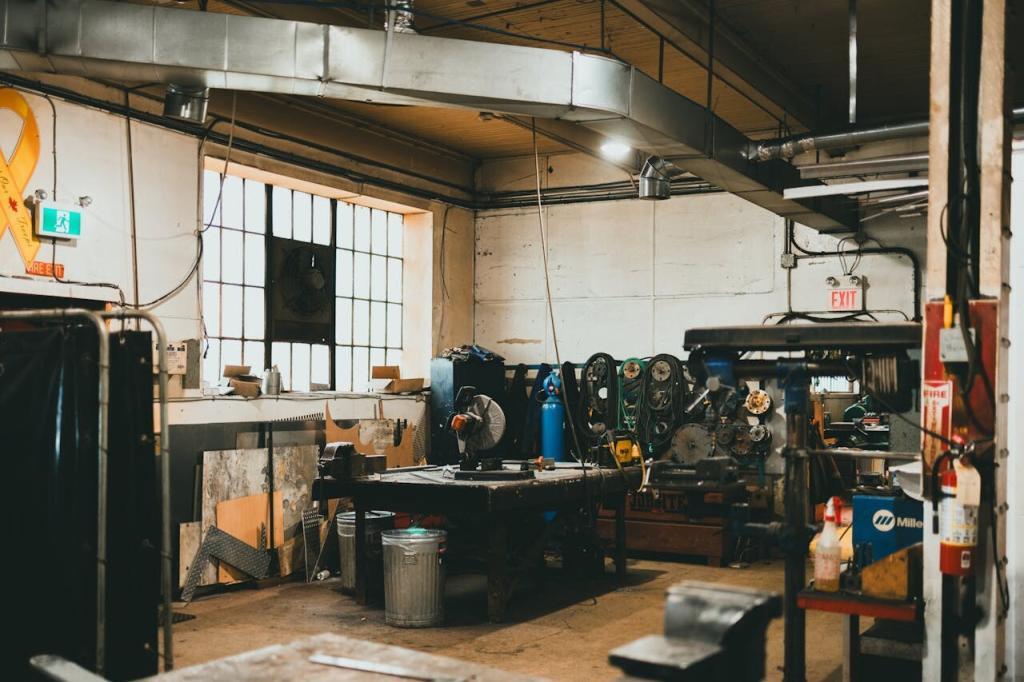Keeping manufacturing plants clean isn’t just about looks—it plays a key role in how well the plant runs, how safe workers are, and how good the products turn out. Today’s factories are complex, so cleaning them requires a smart approach. This means using tech, training staff, and sticking to regular cleaning habits. Factories must put in place thorough cleaning plans to tackle everything from dust in the air to mess on surfaces. This helps create a workspace that’s both safe and productive.
Grasping the Special Cleaning Issues in Industry
Facilities face cleaning problems that are very different from those in offices or homes. These places often have to deal with:
- Big machines that make dust, oil, and metal bits
- Leftover chemicals from making things
- Lots of people walking around and moving stuff
- Tiny bits in the air from welding, cutting, or sanding
These things can cause a buildup of gunk that doesn’t just hurt how well machines work but also puts workers’ health at risk. In places that make food, medicine, and electronics even tiny specks can mess up the products. That’s why many facilities in Denver turn to specialized janitorial services denver co, since they understand the strict requirements of industrial environments and have the tools and expertise to clean effectively and safely.
Putting a Well-Planned Cleaning System into Action
A well-organized cleaning plan plays a crucial role in keeping a facility clean all the time. This starts with a thorough look at how the facility is laid out, spotting areas that need extra attention like production lines, storage spaces, and air systems. After mapping these areas, you can create cleaning schedules based on how often and what kind of dirt builds up.
Main parts of a well-organized plan include:
- Everyday cleaning tasks for busy areas and surfaces people touch a lot
- Deep cleaning of machines and tools every week
- Checking how well the cleaning works each month
- Writing things down and using checklists to make sure everything gets done right and on time
Giving specific jobs to trained workers makes sure cleaning tasks are done well and on schedule.
Buying the Right Cleaning Tools
The success of any cleaning plan relies on the tools and gear used. Heavy-duty cleaning machines, like floor scrubbers, pressure washers, and vacuum systems, play a key role in getting rid of tough dirt and trash. But people often forget about air quality when it comes to keeping a clean place.
Stuff floating in the air can land on surfaces, get into machines, and make it hard for workers to breathe. To fix this many factories are now using high-tech air cleaning systems like an ambient air cleaner. These systems work non-stop to filter and move air around, catching dust, fumes, and other tiny bits before they can build up or be breathed in. By making the air inside better ambient air cleaners help create a cleaner healthier place to work.
Training Employees on Cleanliness Standards
Even top-notch cleaning gear and methods won’t work without staff support. Workers need training on how to keep their work areas clean and why it’s crucial. Training should include:
- How to handle and throw away waste
- How to use cleaning chemicals and tools
- How to report spills or contamination
- Personal hygiene habits in critical production zones
Building a clean-focused culture pushes employees to take charge of their surroundings, which leads to better rule-following and fewer problems.
Using Tech to Keep Getting Better
Technology has an increasing influence on keeping facilities clean and making them even cleaner. Smart sensors can keep an eye on air quality, humidity, and particle levels as they happen, letting staff know about possible problems before they get worse. Cleaning robots that work on their own can take care of tasks that need to be done over and over, like scrubbing floors. This frees up workers to do more complicated jobs.
People can also use data analysis to keep track of how well cleaning is going over time. This helps them spot patterns and find ways to get better. For instance, if one area always seems to have more dirt or germs, bosses can clean it more often or look into what’s causing the problem.
Conclusion
Keeping manufacturing facilities clean goes beyond just looking good—it’s key to running a successful operation. To create cleaner, safer, and more productive workplaces, manufacturers need to tackle the unique challenges of industrial settings head-on. This means putting solid cleaning plans in place, buying the right tools, training workers, and using new tech to their advantage. As manufacturing keeps changing so must the ways we protect and maintain these work environments.

